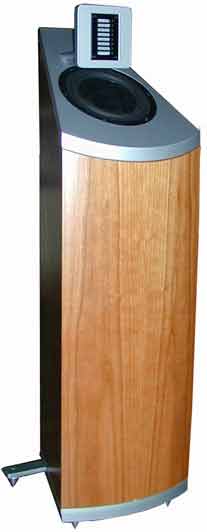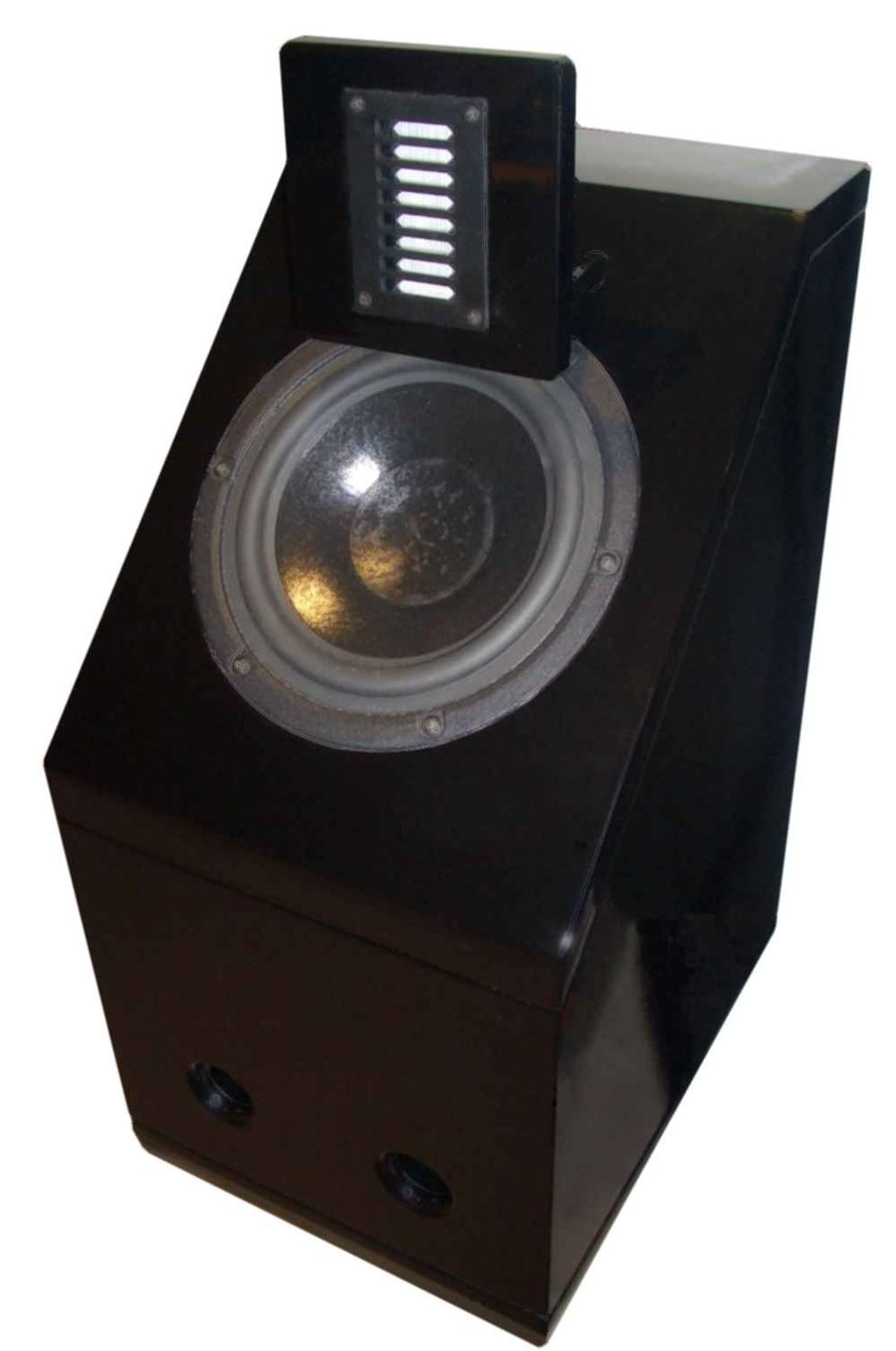That is not the perception I get. Currently I have 3 speaker matrix all aimed directly to the ceiling.
I don't perceive sounds unnaturally elevated. Aiming to ceiling adds to spaciousness.
In comparison if speakers are aimed to the listener typically the image stays at the speakers.
I don't have any acoustic treatments in my room except normal furnituring, curtains, carpet, wall decorations, paintings etc.
You have to get rid of your front wall absorption ! That is the failure !
- Elias
It all depends on the specific reflection pattern. I found side and side-height reflections to be more valuable. I also try to keep D/R ratio high.
I was also talking about the Behringer not FRS8s.
Why do you think front wall absorption would be a factor with a ceiling firing speaker? Didn't you put a baffle close behind the speakers to prevent front wall reflections?
I've tried that but it's nothing you want to do because the ceiling reflection leads to coloration and adds not much to perceived spaciousnes. Worst case the ceiling reflection lifts certain sounds to an unnaturally high location.
That is not the perception I get. Currently I have 3 speaker matrix all aimed directly to the ceiling.
I don't perceive sounds unnaturally elevated. Aiming to ceiling adds to spaciousness..
- Elias
I'm betting here that the difference is with respect to the angle of the driver, its dispersion pattern, diffraction, and very near reflections to the driver.
Again, it's not really about the reflection - it's about the direct sound/near reflection/diffraction.
Having a directive loudspeaker off-axis "pulls" the image in the direction of the higher pressure.
In the case of a "flooder" without a "reflector", it's all about the height of the loudspeaker off of the floor and relative to the listener. This creates the angle and the average off-axis response (vs. the driver's 0-degree axis).
The closer the driver is to the floor, generally the less the image is pulled vertically because there is less of a difference in pressure between the off-axis you are listening to and the driver's 0-degree axis. (..and it's highly dependent on the program material.)
Its also a pretty easy experiment to conduct (raise and lower the loudspeaker), and if you think it's a reflection you can always do what I did ("tack" a blanket up on the ceiling).
This of course does require a moderately directive loudspeaker (at higher freq.s), which is well suited to a full-range driver.
Last edited:
Sorry, doesn't compute.
Try it out with your fullrange drivers in relativly small boxes, with some sound absorption on the ceiling.
All drivers aimed upward at the ceiling, starting from the floor and moving up off of the floor in "increments". (The standard unit of measure in "increments" is a few books to obtain a level height for the loudspeaker.
It all depends on the specific reflection pattern. I found side and side-height reflections to be more valuable. I also try to keep D/R ratio high.
I was also talking about the Behringer not FRS8s.
Why do you think front wall absorption would be a factor with a ceiling firing speaker? Didn't you put a baffle close behind the speakers to prevent front wall reflections?
I also would like to increase D/R from pure flooder, but unfortunately I haven't found a good compromise yet. I have small CD horns too and conclusion so far is in flooder arrangement the speaker directivity should not be too high either.
By removing the front wall absorption you would have frontal reflections which would 'pull' the image back to ear level.
- Elias
Try it out with your fullrange drivers in relativly small boxes, with some sound absorption on the ceiling.
All drivers aimed upward at the ceiling, starting from the floor and moving up off of the floor in "increments". (The standard unit of measure in "increments" is a few books to obtain a level height for the loudspeaker.)
Why now moving the speaker? I thought we were talking about aiming the speaker?
I also would like to increase D/R from pure flooder, but unfortunately I haven't found a good compromise yet. I have small CD horns too and conclusion so far is in flooder arrangement the speaker directivity should not be too high either.
By removing the front wall absorption you would have frontal reflections which would 'pull' the image back to ear level.
- Elias
I've tried but it makes matters even worse because a second order front wall reflection (front wall > ceiling) adds to the strength of the direct ceiling reflection, pulling everything upwards.
Why now moving the speaker? I thought we were talking about aiming the speaker?
Because the axis changes relative to the listener.
Again though, the assumption here is driver with directive higher freq. response and a listener in the same position at the same height.
Because the axis changes relative to the listener.
Again though, the assumption here is driver with directive higher freq. response and a listener in the same position at the same height.
You said "Having a directive loudspeaker off-axis "pulls" the image in the direction of the higher pressure.". Last time I checked human ears are mounted to the left and the right and not on top and bottom of our heads. There is no pressure difference between the ears when a speaker is tilted up or down.
You said "Having a directive loudspeaker off-axis "pulls" the image in the direction of the higher pressure.". Last time I checked human ears are mounted to the left and the right and not on top and bottom of our heads. There is no pressure difference between the ears when a speaker is tilted up or down.
But you still process for a variety of vertical axis's. Confidence level isn't as good, but it's still there.
On a completely unrelated note.. I seem to be having some website "stalling" on my end with the forum today..
Last edited:
But you still process for a variety of vertical axis's.
Yes, but this is based on pinna cues not on ILD or ITD. Pointing a speaker up and down doesn't shift the auditory event up or down, reflections do.
Yes, but this is based on pinna cues not on ILD or ITD.
Pointing a speaker up and down doesn't shift the auditory event up or down, reflections do.
Note, what you are referring to is far more directional than what I'm suggesting.
Hmm.. how to describe this..
The research in the area you are referencing is concerned with absolute direction, primarily 0 degree forward, 0 degree upward, and 0 degree rearward relative to the listener.
IF we were to say that an image was more vertical under these conditions, it be more like looking up for a sound source. The *angle* for detection is altered. If looking at the floor as a 2d "X/Y" graph, the image would have moved along the Y axis, effectively toward your position.
Now a very high amplitude reflection (relative to much lower direct sound), can achieve this effect.
What I'm describing is a bit different.
The image remains in it's same location (from the 2d X/Y of the floor), but rather it's image is moved a bit higher (..now a 3d "Z" axis). Under this sensation it's NOT like looking "up". It's more like an image, say a singer - is higher than he or she was before.
This is still very much an ILD (broad-band) and ITD (..up to about 4k) mechanism.
The very same effect should happen with the IMP (on the other thread) because of the intensity difference from the rear relative to the front (6db higher in the rear drivers relative to the near front driver) - basically shifting images/performers rear-ward to a marginal extent. (..possibly even increasing their apparent depth or "stretching" images ever so slightly in the depth plane because of the differences in direct sound from the forward drivers and the reward drivers.)
Last edited:
I wasn't talking about an image becoming very tall but about focused localization of an auditory event higher than the sound source.
I even wouldn't know if the sensation of a tall but narrow auditory events even exists although I suspect that there is a difference between spaciousness created by side wall reflections and side wall/side-height reflections.
I even wouldn't know if the sensation of a tall but narrow auditory events even exists although I suspect that there is a difference between spaciousness created by side wall reflections and side wall/side-height reflections.
Aren't they all sort of "Plutos"?
Flooder "directivity" just up to the point, where directivity starts to count really. Then changing to plain old forward directivity ...
Yes, I'd also think the main benefit is bringing woofer and tweeter (slightly) closer together. Pointing the woofer upwards has probably no additional effect.
The forward tilted midrange reminds me of the Gradient Helsinki. Salmi is claiming some advantage for that.
actually Salmi is claiming some advantage for tilting it back
and not just that - also cardioid radiation pattern
cardioid radiation pattern
which is there mainly to reduce the floor reflection resulting directly from the fact that the midbass unit is raised off the floor, that is from a deviation from a floor coupled up-firing configuration ideal of Snell Type One or the original Fostex flooder of this thread
- Home
- Loudspeakers
- Multi-Way
- The Advantages of Floor Coupled Up-Firing Speakers

